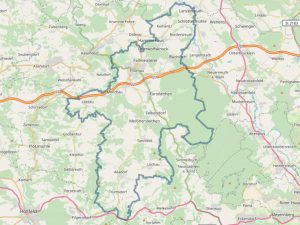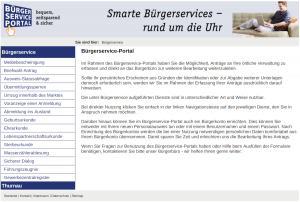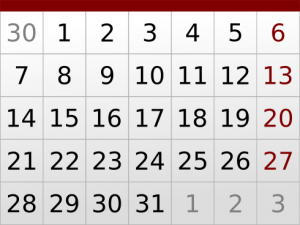Historical Overview
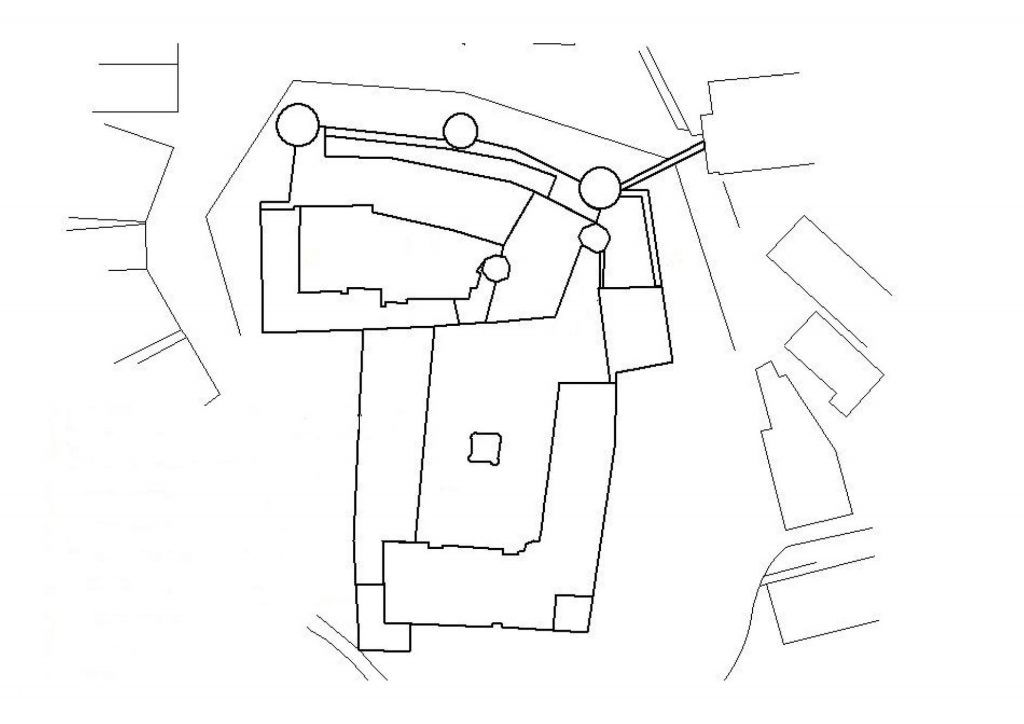
Thurnau castle was built in 1239 by the Förtsch family on a sandstone rock outcrop which rises up out of the surrounding flood plain. The nearby settlement was named “Turnowe” (the early spelling of Thurnau) after this location, meaning “the tower in the water meadow”. The bower (heated apartments and ladies’ chambers) constituted this earliest part of the castle, and, together with two towers, it formed the historical nucleus of the complex.
After the Förtsch family line died out in 1564, the castle passed to the families of Giech and Künßberg by right of inheritance. These two families lived together in the castle for some years, before regular feuding led to the division of the complex in 1576. Henceforth, the Giechs inhabited the area of the upper castle courtyard, whilst the Künßbergs retained the lower courtyard. The split between the two parties proved decisive for the castle’s further development, triggering differing dynamics in terms of construction throughout the subsequent centuries.
The Künßbergs expanded their section of the castle via the addition of an arcade, a gatehouse and the erection of the building now referred to as the Künßberg wing, which was completed in 1675. In 1600, the Giechs began work on the so-called Hans-Georg Building, as well as raising a coach house in 1714. The last extension was the Carl Maximilian Building, which was finished in 1731. A garden in typical baroque style was likewise laid out between 1698 and 1703, receiving a number of improvements in the late 19th century.
On 7th July 1731, the Giech family purchased the Künßbergs’ half of the castle, thereby becoming its sole owners.
The territories belonging to the Giechs became Prussian in 1796, prior to being integrated into the Kingdom of Bavaria in 1810. The last member of the Giech family, Friedrich Carl Lothar von Giech, died in 1938 without progeny. As a result, Hiller von Gaertringen and his family came into possession of the entire property, before it finally passed to the Giech comital charitable foundation in 1972.
The bower
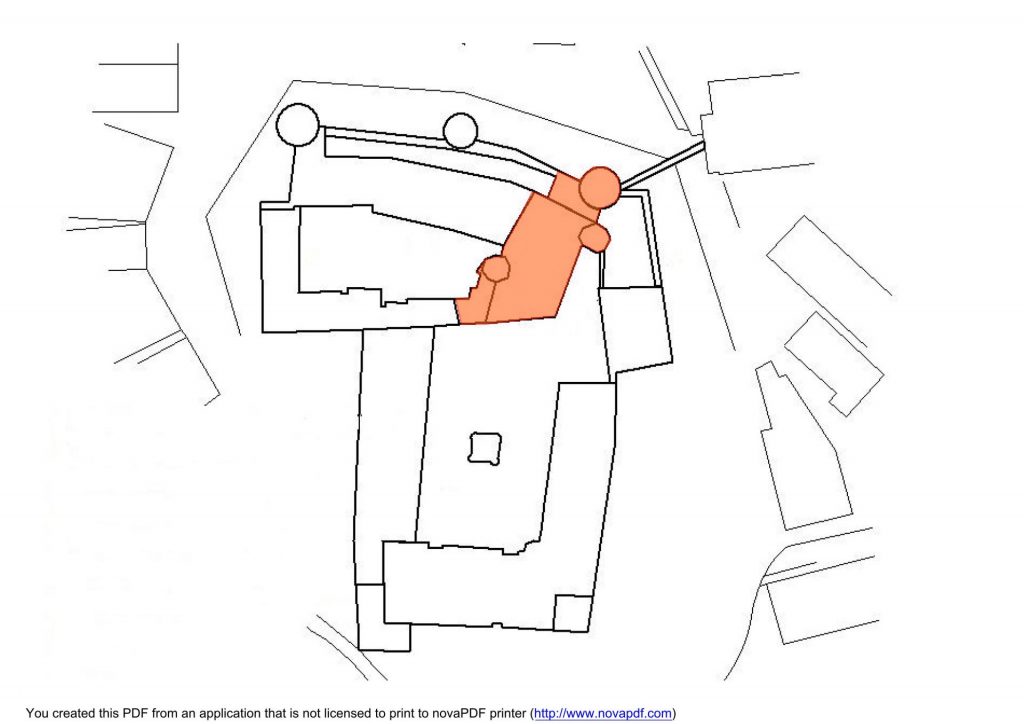
The bower („Kemenate“) represents the oldest and most prominent building of the castle Thurnau. At any time, the bower was used as a fireplace, living and working room. As the castle has been built in the 13th century by the knights Förtsch, they have been the first inhabitants of the bower of castle Thurnau.
In 1565 the castle with its bower was in possession of the Giech and Kindsberg (Künsberg) in reason of an alliance between one of the Förtschs‘ daughter’s with one of the new owner of the castle.
The bower consists of four levels: the kitchen, the old bed-chamber, the room for the staff and the room for the bellboys.
Rear snail, Little Vine Court and Stork Building
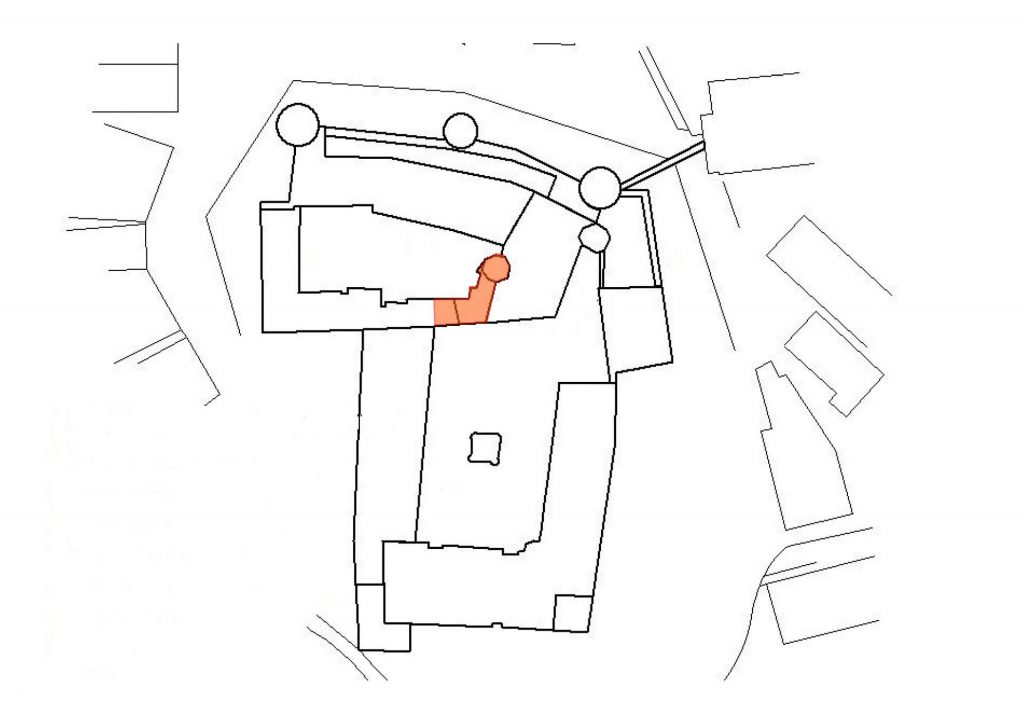
The rear staircase, housed in an octagonal stair turret known as „Hinterer Schnecken“ (the „rear snail“), was built in 1583 by Hans-Georg von Giech. 154 steps lead up the spiral staircase to the topmost floor of the bower (women’s chambers).
The memorial engraving on the staircase wall recalls the castle’s acquisition by the Lords of Giech and Künßberg in 1565.
Sculptures, memorials and familial tombstones collected by Count Franz Friedrich Carl von Giech between 1846 and 1863 are on display in the bower’s niche, nicknamed the „Weinhöflein“ („Little Vine Court“). In 1672, three malefactors were imprisoned here after an affray and escaped from the poorly guarded niche.
Next to the bower stands the „Storchenbau“ or „Stork Building“. Old pulleys and machicolations point to it being the former gate until sometime before the 1580s. The building owes its name to the fact that its shape conjures forth an image of it standing on stork’s legs.
Carl-Maximilian-Building, coach house and castle fountain
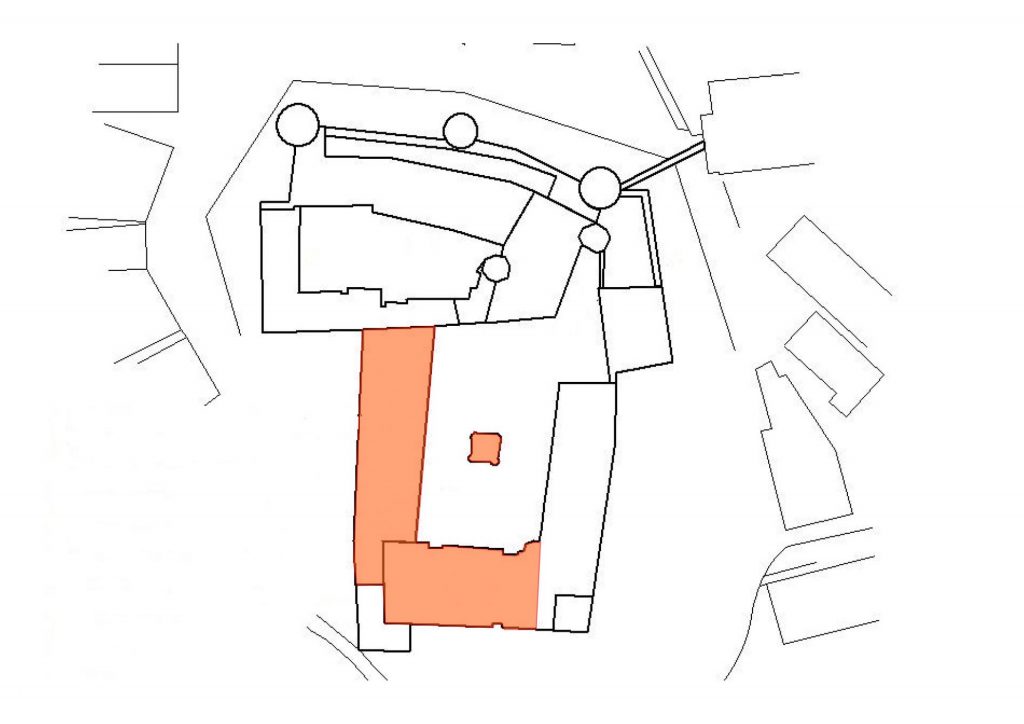
The Carl Maximilian Building is named after Count Carl Maximilian, who finished the building in 1731. The two-storey longhouse served to accommodate guests as well as offering space for various festivities. The ground floor also contained the below stairs area, whilst the court staff were quartered in the attic.
The building on the left functioned as a coach house („Kutschenhaus“). As with the construction of the Carl Maximilian Building, the erection of the coach house began under Count Carl Gottfried. Christian Friedrich Carl von Giech added a further floor to the carriage house, thereby increasing its height.
Under the instruction of Baron Hiller von Gaertringen (1938-1972), the carriage house was replastered and some structural improvements were made.
The castle fountain („Schlossbrunnen“), built in 1755, lies in the spacious main courtyard. The rococo fountain with its shell-shaped ornaments, cherubs and a swan, the heraldic beast of the Counts of Giech, is the work of the sculptor Georg Caspar Clemm, who hailed from Römhild.
Hans-Georg-Building
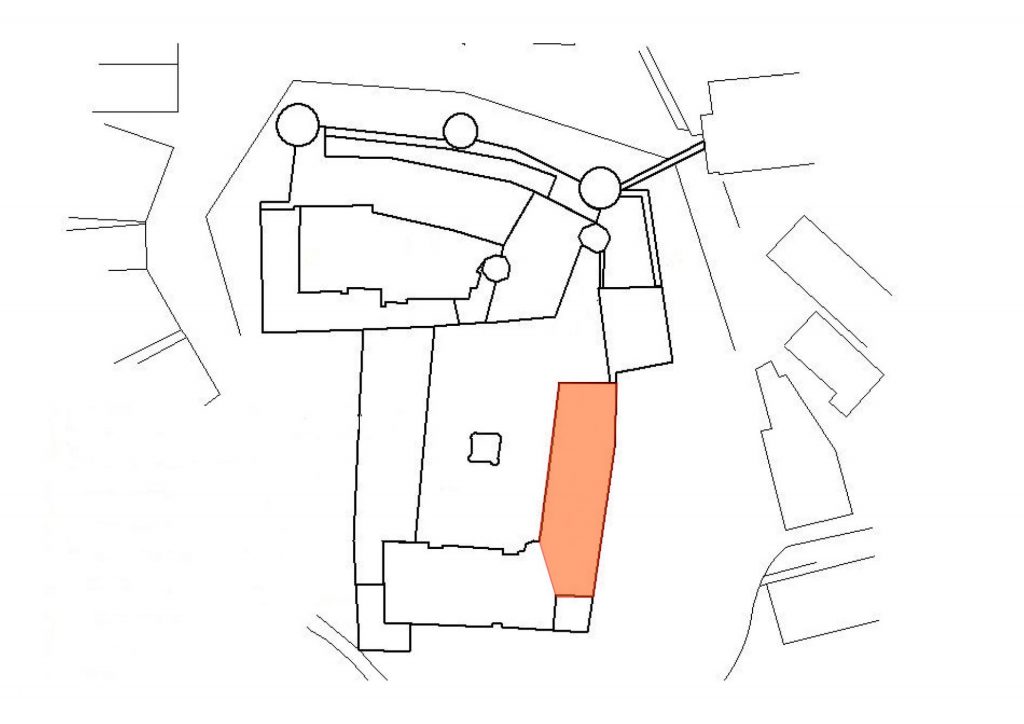
This building is named after Hans-Georg von Giech, who commissioned its construction from 1600 to 1606. It was renovated in 1710, when another storey was added.
Apart from a stable, it also contained archives, a library, living quarters and guestrooms.
Due to major structural instabilities, the building needed permanent redevelopment, as indicated by the metal braces in the wall. The last Baroness of her family, Caroline Hiller von Gaertringen, Countess of Giech, resided in the rooms on the first floor until her death in 1968.
The Hans-Georg Building has remained uninhabited since her passing.
The Künßberg-wing
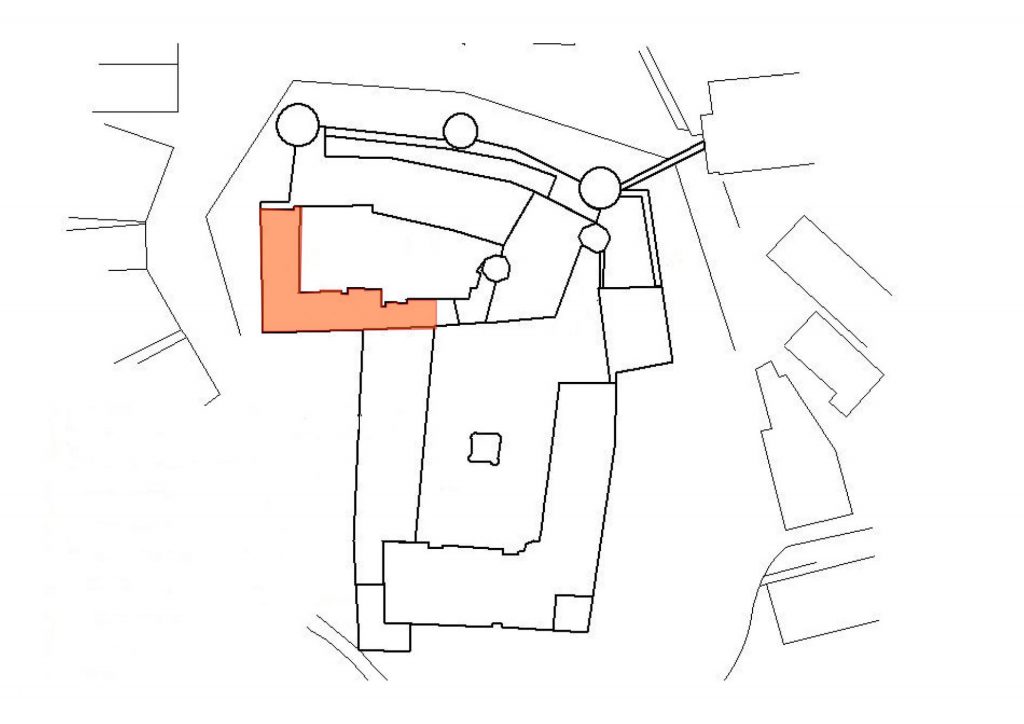
From 1564 onwards, Thurnau castle was jointly owned by the families of Giech and Künßberg.
However, in 1576, after several years of the two families living peacefully together side-by-side, the division of the castle and the surrounding feudal estates took place. The exception to this was the market town of Thurnau itself, which remained in shared ownership.
Henceforth, the Giechs inhabited the area of the upper castle courtyard, whilst the Künßbergs retained the lower courtyard („Künsberg-Flügel“).
In July 1688, the dispute between these two families reached boiling-point, culminating in a shoot-out between servants of the Giechs and staff in the employ of the Künßbergs.
In 1731, these conflicts were finally resolved. The Giech family purchased the half of the castle which belonged to the Künßbergs, thereby becoming its sole proprietors.
The north wing and the outer bailey
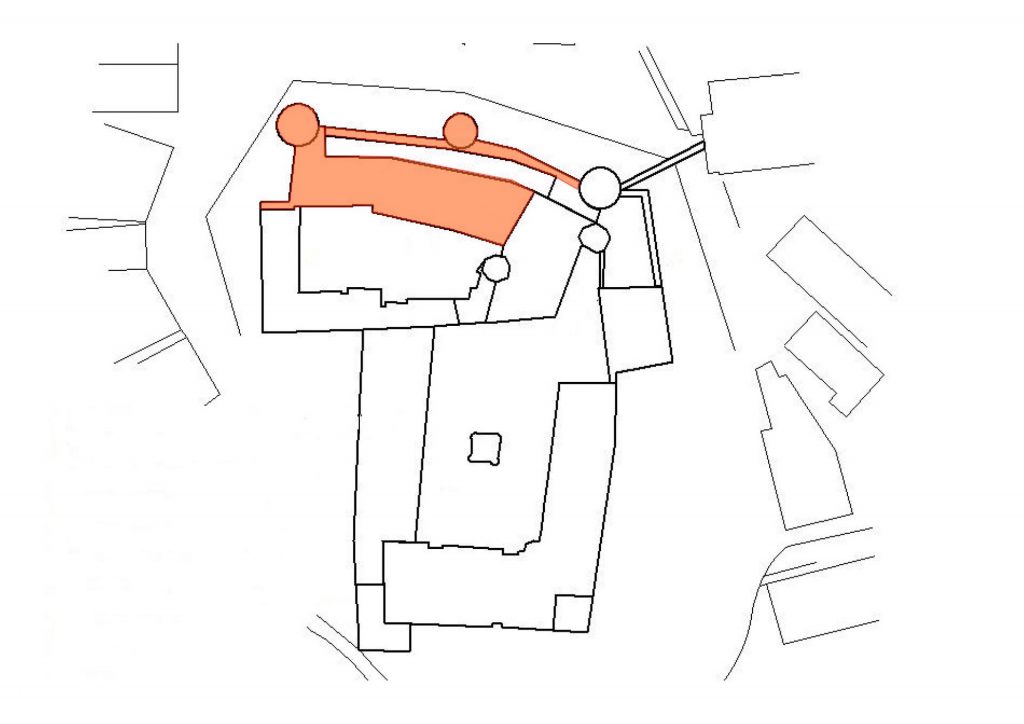
The north wing and the outer bailey („Zwinger“) were built in the 15th century by the Förtsch family. The Hussites invaded Franconia in 1430 and severely damaging Thurnau castle. Following this, the Förtsch family made the decision to reinforce their castle’s fortifications. They therefore constructed an outer bailey, an open area between the castle and its outermost defensive wall. Later, an allure was added to the defensive wall, which also includes three towers.
The north wing („Nordflügel“) was conceived as an extension of the bower (women’s chambers) and was used as living quarters. In 1576, the families of Künßberg and Giech inherited the castle, with the Künßbergs moving into the north wing. The Giechs only gained possession of the whole castle much later, in 1731. The north wing housed their familial archive from the 19th century onwards.
The Cent-Tower and the White Tower
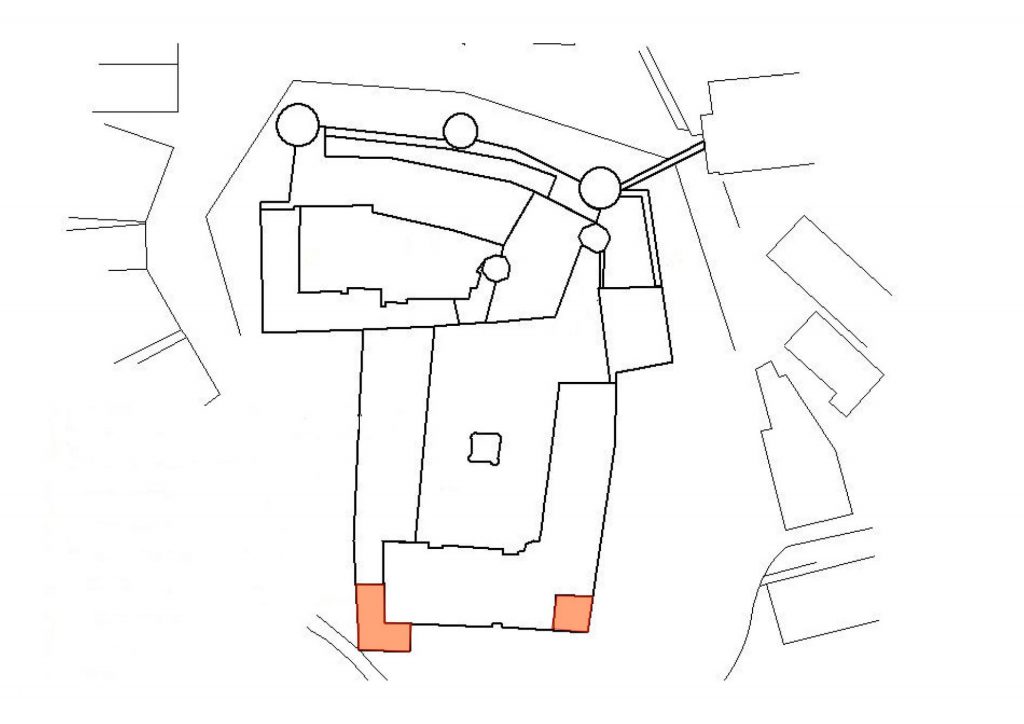
The coach house is flanked by the Cent Tower („Cent-Turm“) on its west side and the White Tower („Weißer Turm“) to its east.
Until the end of the 17th century, the Cent Tower was owned by the Künßbergs. In the course of bartering on the part of Count Christian Carl II. von Giech, the Cent Tower became the property of the Giechs. Count Carl Gottfried von Giech completely restored the tower in 1704. Moreover, he brought it into line with the height of the White Tower and fitted it with an onion-shaped dome. The family crest can be seen on the exterior of the tower. The second and fourth floors of the tower contained prison cells, whilst the fifth floor was presumably used as a kind of torture chamber.
Rising skywards on the eastern side of the castle is the White Tower. It takes its name from its facade, which was originally bright in hue, and consists of five floors. As with parts of the Cent Tower, both the basement and the ground floor of the White Tower were used as prison cells.

